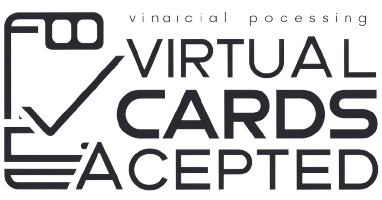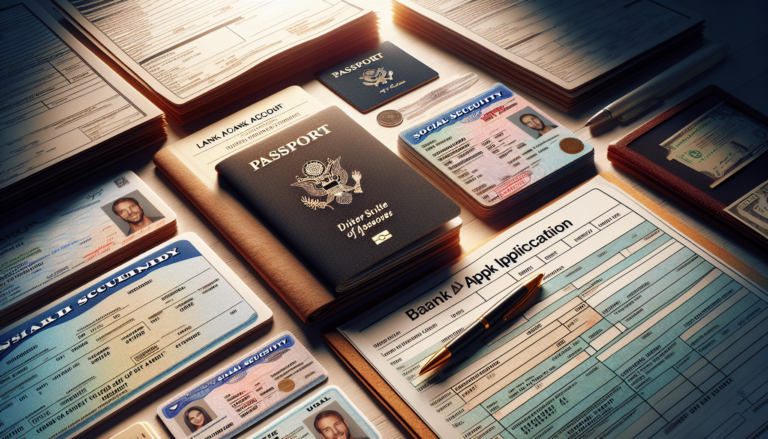Introduction to Opening a Bank Account
Opening a bank account is an important financial step for managing your money securely and efficiently. Whether you’re looking to open a checking account for daily transactions or a savings account to earn interest on your deposits, having the right documents prepared can make the process smoother. In this article, we’ll discuss what to bring to open a bank account and provide tips for navigating the account opening process successfully.
Before visiting a bank to open an account, it’s crucial to gather the essential documents required. This typically includes valid photo identification, proof of address, and your Social Security number or Taxpayer Identification Number. Having these documents ready will help you avoid delays and ensure a more efficient account opening experience.
Why It’s Important to Have the Right Documents
Banks require specific documentation to verify your identity and comply with regulations designed to prevent fraud and money laundering. Without the necessary documents for opening a bank account, you may face challenges or delays in the account opening process. By gathering the required documents beforehand, you can streamline the procedure and get your new account up and running more quickly.
In addition to speeding up the account opening, having the right documents helps protect your financial security. Banks use this information to confirm that you are who you claim to be, reducing the risk of identity theft or unauthorized access to your account. So, while it may seem like an extra step, providing the required documentation is essential for safeguarding your finances.
Essential Documents Needed to Open a Bank Account
When preparing what to bring to open a bank account, there are several key identification documents you’ll need. These typically include a valid government-issued photo ID, your Social Security card or Taxpayer Identification Number, and proof of your current address. Let’s take a closer look at each of these essential documents:
Valid Photo Identification
A valid photo ID is a crucial piece of identification required when opening a bank account. This could be a driver’s license, state-issued identification card, passport, or military ID. The ID must be current and not expired. It’s important to note that some banks may require two forms of photo identification, so it’s a good idea to bring a backup ID just in case.
Your photo ID serves as proof of your identity and helps the bank verify that you are who you claim to be. This step is essential for preventing fraud and ensuring the security of your account. If you don’t have a valid photo ID, you may need to obtain one before you can successfully open a bank account.
Social Security Number or Taxpayer Identification Number
In addition to a valid photo ID, you’ll need to provide your Social Security number (SSN) or Individual Taxpayer Identification Number (ITIN) when opening a bank account in the United States. This unique identifier is used by the bank to report the interest you earn on your account to the Internal Revenue Service (IRS) and to help prevent identity theft.
If you don’t have an SSN, you may be able to use an ITIN instead. ITINs are issued by the IRS to individuals who are required to have a U.S. taxpayer identification number but do not have, and are not eligible to obtain, an SSN. It’s important to note that not all banks accept ITINs, so it’s best to check with your chosen institution beforehand.
Proof of Address
Banks also require proof of address to open an account. This documentation verifies your current residential address and helps the bank communicate with you regarding your account. Acceptable proof of address may include a recent utility bill, rental agreement, mortgage statement, or other official document that shows your name and address.
If you recently moved and haven’t yet updated your address on official documents, you may be able to provide a piece of mail delivered to your new address along with your photo ID. Some banks may also accept a signed lease or a letter from your employer verifying your address. It’s best to check with your bank to confirm which documents they accept as proof of address.
Minimum Initial Deposit
While not a document, it’s important to note that many banks require a minimum initial deposit to open an account. This amount varies by institution and account type but typically ranges from $25 to $100. Some banks may waive the minimum deposit requirement if you set up direct deposit or meet other qualifications.
It’s a good idea to check the minimum deposit requirements for the specific account you’re interested in before visiting the bank. This will help you avoid any surprises and ensure you have the necessary funds available to open your account. Keep in mind that ongoing minimum balance requirements may also apply, so be sure to review the account terms carefully.
Types of Bank Accounts You Can Open
When opening a bank account, you have several options to choose from depending on your financial needs and goals. The most common types of bank accounts include checking accounts, savings accounts, certificates of deposit (CDs), and individual retirement accounts (IRAs). Here’s a brief overview of each:
Checking Accounts
A checking account is a type of bank account designed for frequent transactions and daily use. With a checking account, you can easily deposit and withdraw money, pay bills, and make purchases using checks, a debit card, or online banking. Many checking accounts also offer features like mobile check deposit and online bill pay for added convenience.
Checking accounts typically don’t earn interest, or if they do, the rate is usually lower than that of a savings account. However, they offer the flexibility and accessibility needed for managing your day-to-day finances. When opening a checking account, consider factors like minimum balance requirements, monthly maintenance fees, and ATM accessibility.
Savings Accounts
Savings accounts are designed to help you set aside money and earn interest over time. These accounts typically offer higher interest rates than checking accounts, allowing your money to grow. However, savings accounts are not intended for frequent withdrawals and may have limitations on the number of transactions you can make each month.
When choosing a savings account, compare interest rates and annual percentage yields (APYs) from different banks to find the best deal. Also, consider factors like minimum balance requirements, monthly maintenance fees, and ease of access to your funds. Some banks offer special high-yield savings accounts with higher interest rates, but these may come with stricter requirements or limitations.
Certificates of Deposit (CDs)
A certificate of deposit (CD) is a type of savings account that offers a fixed interest rate for a specific term, typically ranging from a few months to several years. When you open a CD, you agree to leave your money in the account for the specified term in exchange for a higher interest rate than you would typically earn with a traditional savings account.
CDs are a good option if you have a lump sum of money that you don’t need immediate access to and want to earn a guaranteed return. However, it’s important to note that withdrawing your money before the end of the CD term may result in early withdrawal penalties. When considering a CD, compare interest rates, term lengths, and minimum deposit requirements from various banks.
Individual Retirement Accounts (IRAs)
Individual retirement accounts (IRAs) are savings accounts designed specifically for retirement savings. There are two main types of IRAs: traditional and Roth. With a traditional IRA, your contributions may be tax-deductible, and your earnings grow tax-deferred until you withdraw the money in retirement. With a Roth IRA, your contributions are made with after-tax dollars, but your earnings grow tax-free, and you can withdraw the money tax-free in retirement.
IRAs offer a way to save for retirement while potentially reducing your tax liability. However, they come with specific rules and restrictions, such as annual contribution limits and penalties for early withdrawals before age 59 1/2. When opening an IRA, consider factors like investment options, fees, and the reputation of the financial institution.
Tips for a Smooth Bank Account Opening Process
Opening a bank account can be a straightforward process if you’re well-prepared. Here are some tips to help ensure a smooth account opening experience:
Choosing the Right Bank
Before opening an account, take some time to research and compare banks to find the one that best fits your needs. Consider factors like account fees, interest rates, ATM and branch accessibility, online and mobile banking features, and customer service reputation. Don’t be afraid to ask questions and gather information to make an informed decision.
Confirming Eligibility
Make sure you meet the eligibility requirements for the specific account you want to open. Some accounts may have age restrictions, minimum balance requirements, or other qualifications. Checking these requirements ahead of time can save you from unexpected surprises during the account opening process.
Submitting Your Application
Once you’ve gathered the necessary documents and chosen your bank and account type, it’s time to submit your application. Many banks allow you to start this process online, but you may need to visit a branch in person to complete the account opening and present your identification documents.
When filling out your application, be sure to provide accurate and up-to-date information. Double-check your details before submitting to avoid any delays in processing. If you have any questions during the application process, don’t hesitate to ask a bank representative for assistance.
Understanding Account Fees and Rates
Before finalizing your account opening, make sure you understand any associated account fees and interest rates. Review the fee schedule and ask questions about any charges that are unclear, such as monthly maintenance fees, ATM fees, or overdraft fees. Also, clarify the interest rates and annual percentage yields (APYs) for interest-bearing accounts like savings accounts or CDs.
Understanding the fees and rates associated with your account can help you avoid unexpected charges and maximize your earnings. Don’t be afraid to negotiate or ask about waiving certain fees, especially if you meet specific qualifications like maintaining a minimum balance or setting up direct deposit.
Conclusion
Opening a bank account is a crucial step in managing your finances effectively. By gathering the essential documents and following the tips outlined in this article, you can navigate the account opening process with confidence and ease. Remember to bring a valid photo ID, your Social Security card or ITIN, proof of address, and any required minimum initial deposit when visiting the bank.
When choosing an account type, consider your financial goals and needs. Whether you opt for a checking account for daily transactions, a savings account to grow your money, a CD for guaranteed returns, or an IRA for retirement savings, there’s an option to suit your unique situation. By taking the time to research and compare banks and accounts, you can find the best fit for your financial lifestyle.
Recap of Essential Documents and Tips
In summary, opening a bank account requires several key documents and steps:
| Essential Documents | Tips for Opening an Account |
|---|---|
|
|
By following these guidelines and being well-prepared, you can streamline the account opening process and take a confident step towards better financial management. With the right account and banking relationship, you’ll be well on your way to achieving your financial goals.
See also:






